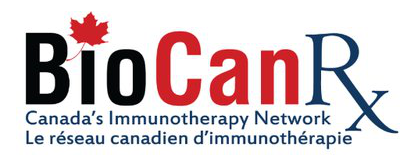
Time for a pop quiz:
Who responds better to CAR-T therapy? Men or women?
What dose of the therapy works best? A low dose? Medium? A high dose?
Those are just two of the questions Dean Fergusson of the Ottawa Hospital Research Institute (OHRI) has been trying to answer by looking at individual data from clinical trials into this promising new way to treat people with blood cancers, such as leukemia or lymphoma, for whom other treatments have proven unsuccessful. (See Drilling down to improve CAR-T therapy, from the BioCanRx April 2022 newsletter.)
(Spoiler alert: Women seem to respond better to therapy than do men. And a medium dose of CAR-T cells seem to work best.)
To reach these answers, Dr. Fergusson, a Senior Scientist and Director of the Clinical Epidemiology Program at the OHRI, and his team analyzed the individual records of more than 2,400 patients who participated in more than 102 clinical trials – a very labor-intensive process, he said! The team looked at more than a dozen variables related to characteristics of the patients themselves, the specific treatments they received and the different processes used to manufacture the CAR-T cells and then use them to enrich the patients’ own immune cells.
The analysis, which is largely complete, has confirmed that CAR-T therapy is a life-saving treatment for blood cancers, with a 54% efficacy rate. This is particularly significant, given that most patients who receive this therapy at the end of the line – other treatments have not worked, and without CAR-T therapy, the cancer is likely to prove fatal.
Their deep dive into individual patient-level data, however, also found important differences in the efficacy of CAR-T therapy according to factors both intrinsic to the patient, such as gender, and extrinsic, to do with the CAR-T cells themselves.
Interestingly, two factors did not appear to make a significant difference to the efficacy of CAR-T therapy: while the type of blood cancer made a difference, it did not seem to make a difference how sick the patient was (given, as Dr. Fergusson observed, that this is a population of very sick patients). Nor did the number of previous rounds of other therapies appear to make a difference.
“For many, this is a last-chance therapy,” said Dr. Fergusson. “It didn’t seem to make a difference, though, in terms of the stage of cancer or what therapies you had previously had.”
Dr. Fergusson’s work has important implications for both research and the clinic.
For instance, researchers may be interested in finding out exactly why women respond better to treatment than do men. What is it in the male body that causes it to respond less well and more important, with that knowledge, how can CAR-T therapy be tweaked to overcome this lesser response.
In the clinic, physicians will have more guidance to help them select patients who will benefit from CAR-T therapy and determine the best dose for them. Higher doses are generally seen as more effective, but with greater risks as well. However, while more work is needed on the subject, this study suggests a medium dose is the most efficacious and without the attendant risks that can come with that higher dose.
Having this guidance, however, is meaningless if clinicians are not aware of it. That’s why, from the beginning, Dr. Fergusson has had knowledge users integrated into the team. They have helped, for instance, with writing and reviewing the primary manuscript, and will play a strong role in making sure their fellow clinicians are aware of this work.
Dr. Fergusson and his team are also looking to the future. They would like to make this a “living” study, with its results continually updated with new findings. The challenge is finding an avenue to publish these results; few journals are willing to commit in advance publishing updates and there are few effective other options that would actually reach clinicians and other target audiences. To achieve this goal, Dr. Fergusson is talking to other researchers doing living studies to get some insight into his options, so he can learn from their experiences.
Ultimately, Dr. Fergusson is driven by the desire to make an already-game-changing therapy even better, by identifying areas to improve – both now and as the treatment changes in the future. In that regard, he says the study was “a ton of work” but very satisfying.

